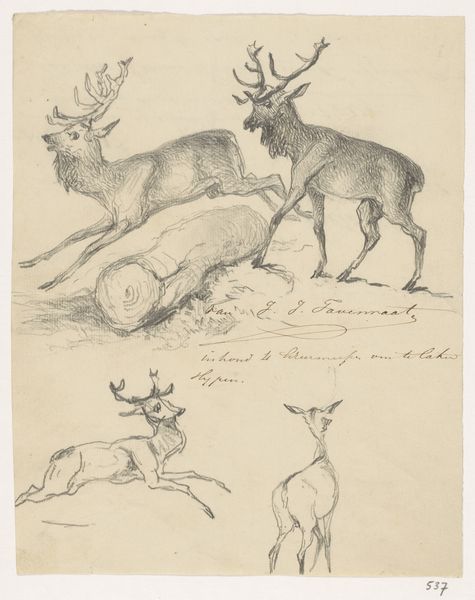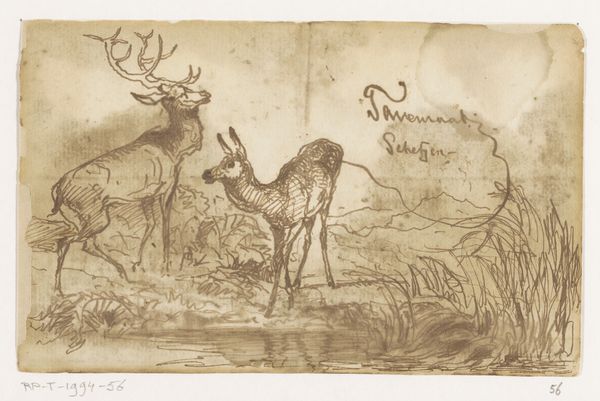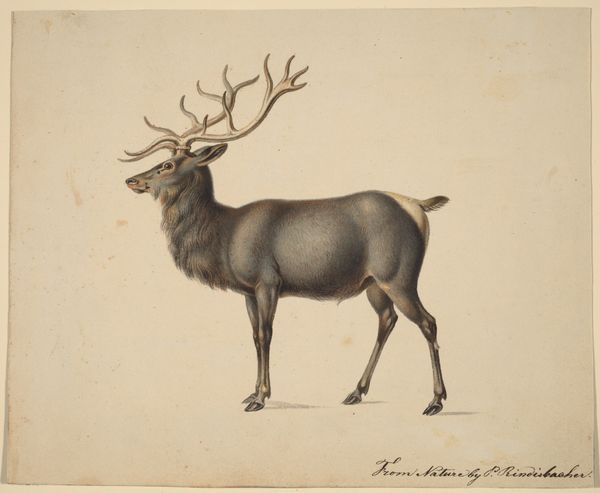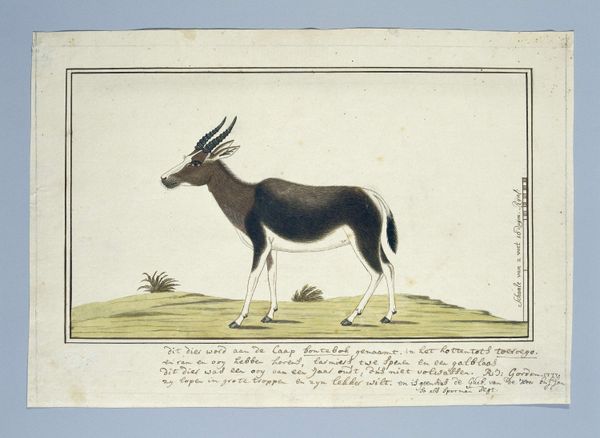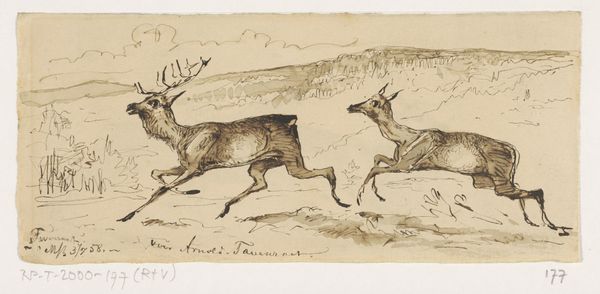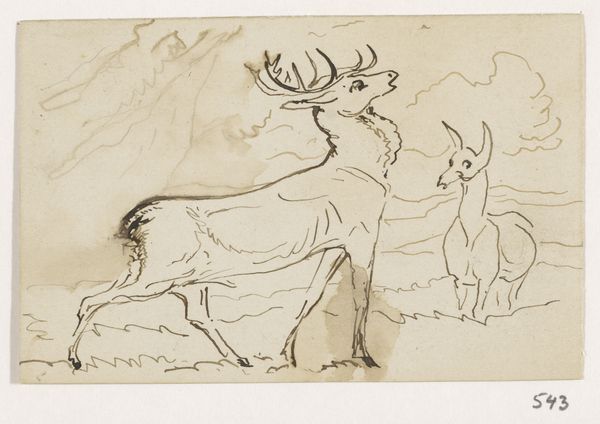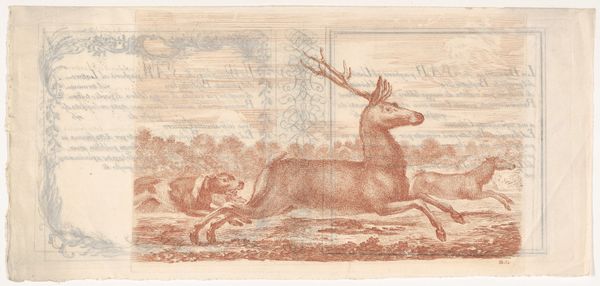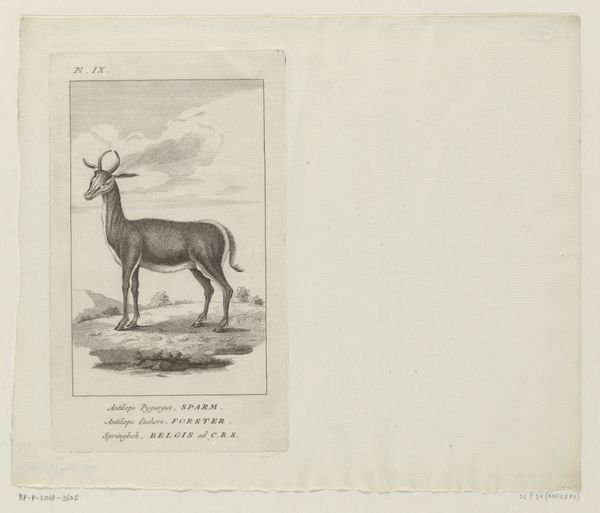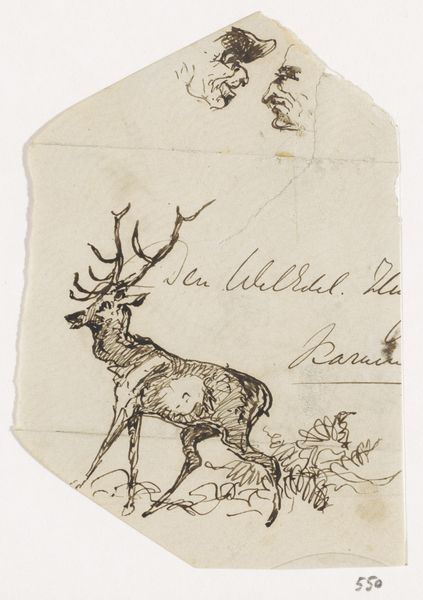
drawing, pencil
#
drawing
#
landscape
#
figuration
#
coloured pencil
#
romanticism
#
pencil
Dimensions: 218 mm (height) x 254 mm (width) (bladmaal)
Editor: This drawing from 1836, “A lying Stag and a standing Hind” by Johan Thomas Lundbye, has such a gentle, almost melancholic quality. It's crafted with pencil and colored pencil. I'm curious, what strikes you about it? Curator: Well, the immediate feeling it evokes, beyond the tenderness, is one of national romanticism, a powerful trend at the time. Look at the choice of subject: deer in a Scandinavian landscape. Animals, particularly those with symbolic weight like the stag, can speak volumes about cultural identity. Does the image invite any cultural associations to your mind? Editor: Definitely! The stag is majestic and regal. Maybe it evokes a sense of longing for an untouched, idealized past? Curator: Precisely! These artists were actively constructing a visual language around notions of 'Danishness', drawing upon folklore, history and an imagined connection to the land. The deer embodies qualities seen as virtuous: strength, freedom, a primal connection to nature. But is it purely celebratory? Consider the rather somber tone, the muted colors. Does that complicate the message? Editor: It does. Perhaps it speaks to the vulnerability of that ideal. The hind is very watchful. Are they under threat? Curator: An interesting reading. The artist may have felt anxious about change during that period of industrial and social transformation in Europe. Drawing styles can be incredibly informative about emotional intent. Did you also know deer represent a deep connection with our inner child, allowing play and spontaneity to move us? What will you carry with you after seeing it? Editor: I'll remember that art can be both celebratory and a warning, a projection of cultural values but also anxieties. Curator: Indeed! Art can speak many layers, a voice we hear throughout time.
Comments
No comments
Be the first to comment and join the conversation on the ultimate creative platform.

